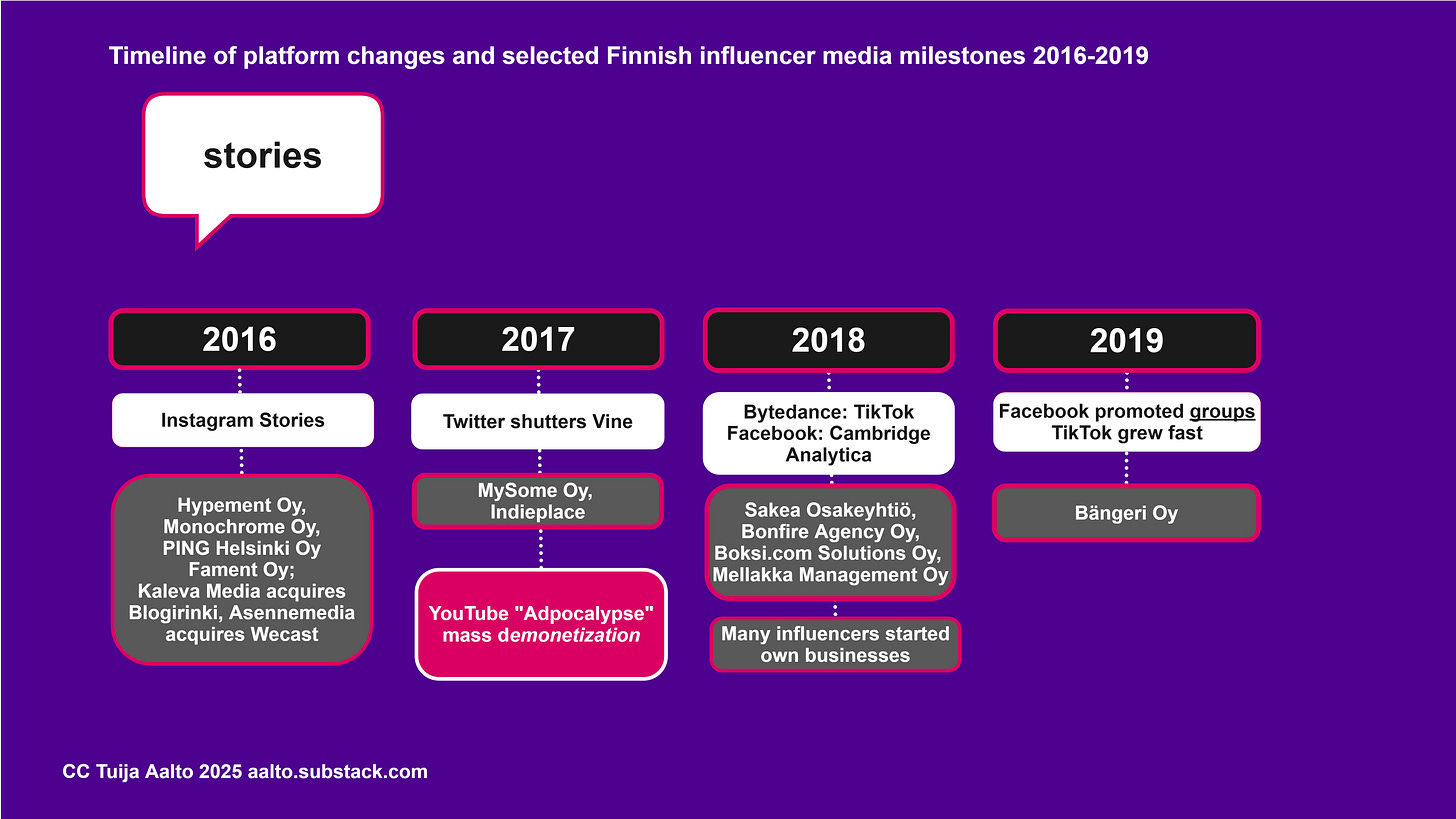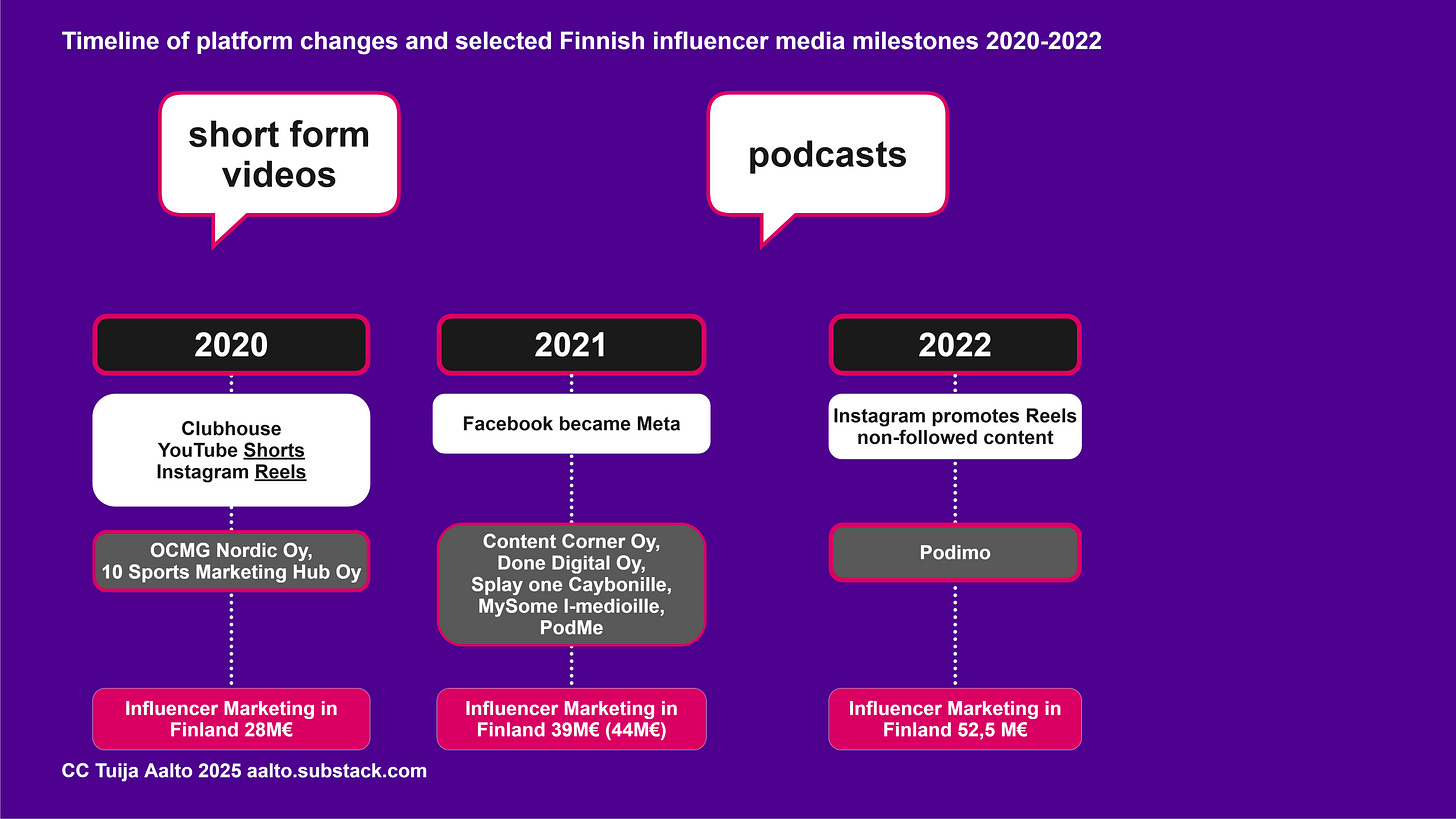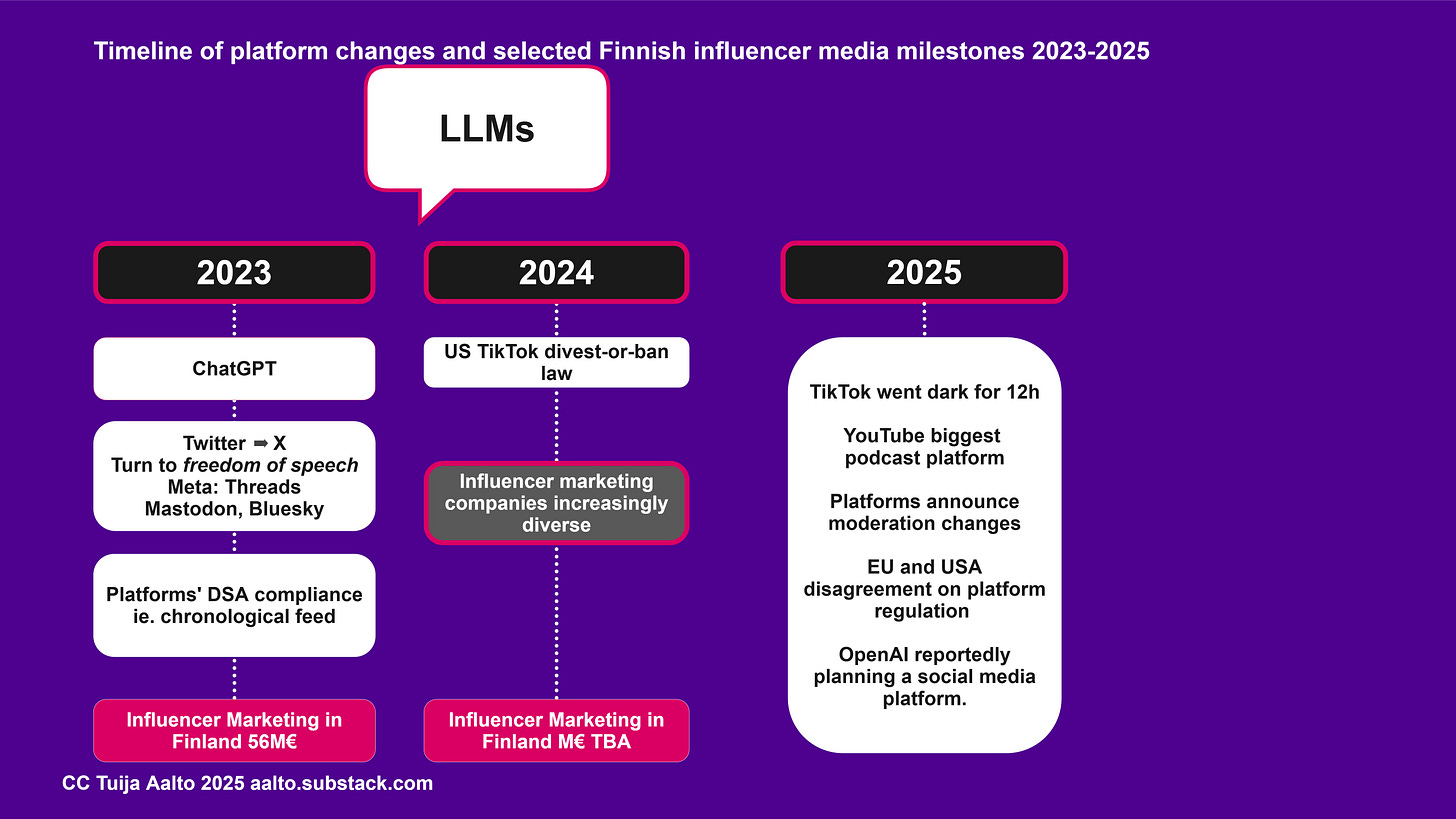Where were you when podcasts went mainstream?
Technically feasible in the early oughts, podcasts have only recently become commercially viable in Finland. Where does it go on the platform timeline?
If you are in the influencer industry, you have developed a routine of keeping yourself up-to-date on platforms’ algorithm changes and other developments. Often the new developments affect your visibility and opportunities immediately.
To support my PhD research on how platforms change the Finnish media landscape, I’ve compiled a timeline covering some of the key moments from the Finnish perspective. Placing podcasting on the timeline puzzles me.
If you’re a seasoned media industry practitioner like me, you know that podcasting as a socio-technical innovation involved adding MP3 files to RSS feeds, allowing for receiving the files as they were published. Apple iTunes’ and iPods’ podcast support increased awareness and accessibility of the new digital habit.
I was primus motor in launching Yle’s early podcast experiments in 2005. A decade later audio on demand became a strategic development area for commercial media companies. Sanoma launched Supla, Bauer media, Podplay, and PodMe, now owned by Schibsted, and the danish Podimo entered the Finnish AOD market in 2021 and 2022 respectively.
Where do podcasts belong on a timeline depicting platform affordances? I argue that even though Apple, the operating system and a device manufacturer, embraced podcasts as early as in the oughts, it was the proliferation of youtubers as podcasters in terms of content and YouTube endorsing Podcasts as a publishing category in 2023 that puts podcasts where it is here on the platform changes timeline. You are welcome to disagree, let’s discuss this in the comments.
Podcast listening, having finally become mainstream, has added to the daily media consumption along with other new media habits such as audiobooks and mobile games. The time spent consuming media has increased in Finland over two and a half hours over the last nine years, forty minutes of which are spent with new media such as mobile, mobile gaming, podcasts and audiobooks as reported in a recent IAB webinar.
Zooming in to some other details in the platform changes timeline, it was YouTube’s change of algorithm to prioritize watch time rather than views count, accommodating more advertising, that encouraged creating more long form video content.
When it comes to influencer industry businesses, 2014 marks the birth of the first Finnish MCN, Töttöröö (now Troot). Soon Facebook also pivoted to video.
Meanwhile, Snapchat (now Snap) introduced ephemeral pictures, and the Stories feature in 2016, getting an enthusiastic user response partly due to the launch of the iPhone 5 with a nice front camera, as recalled by Evan Spiegel in a recent “How I Built This with Guy Raz” podcast.
The year 2018 saw many new influencer marketing agencies, founded in Finland, some specialized in short form video made popular by TikTok’s meteoric rise.
The covid period from 2020 on saw much excitement around a new kind of social audio app, Clubhouse. It didn’t last. Of couse Facebook rebranded as Meta in 2021 and its platform Instagram introduced Reels in 2022, compelling influencers to start producing short videos or face decreasing visibility, not an option if doing commercial collaborations for a living.
While I was conducting my research interviews for my PhD project in 2023 it was not yet obvious how AI developments would affect influencer industry. Now, in 2025, it has been reported that Open AI, the company behing the popular Large Language Model Chat App ChatGPT, is planning to launch a social media platform.
Meanwhile YouTube, celebrating its 20th anniversary, apparently has become world’s biggest podcast platform and the most popular service used for podcast listening in the U.S. as reported by Edison Research. That’s an example of platformization, the penetration of infrastructures, economic processes and governmental frameworks of digital platforms in different economic sectors and spheres of life, as well as the reorganisation of cultural practices and imaginations around these platforms (Poell et al 2019).
This timeline concentrates on the Finnish experience. Which examples of platform changes, money flows and business opportunities involved with platforms do you find most interesting in where you live? Do share in the comments!








